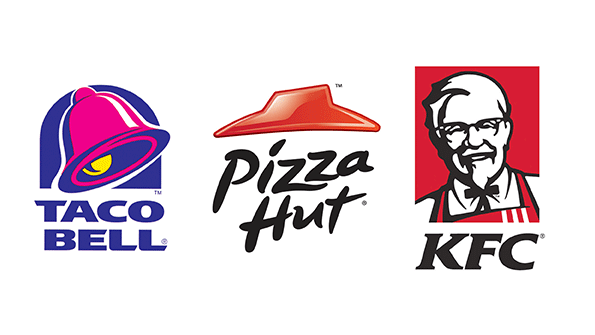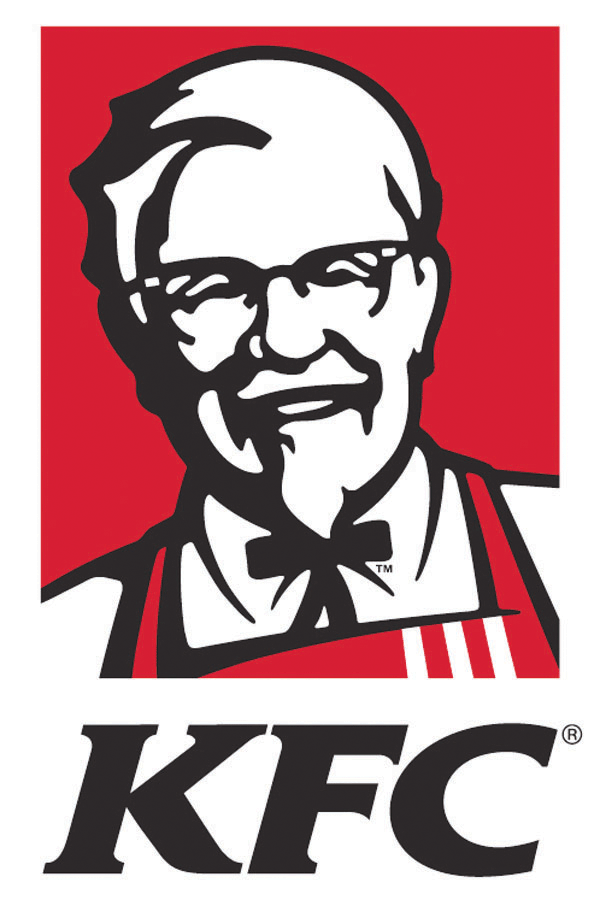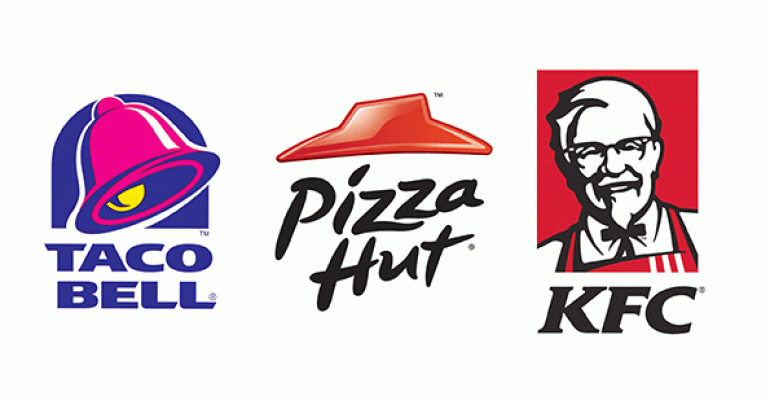
Yum! Brands Inc. plans to cut $300 million in costs and sell as many as 2,000 restaurants to franchisees as it prepares for life following the upcoming spinoff of its China unit, the company said Tuesday during its annual investor conference.
Executives of the Louisville, Ky.-based franchisor, detailing plans to intensify growth as a primarily franchised company, also suggested that they are more open to an acquisition of a fourth brand.
“We’re not looking to acquire something,” Yum CEO Greg Creed said in response to an analyst’s question during the conference. “We think there’s just enormous growth with the three brands we’ve got. But if an opportunity arose to acquire something, we have plenty of liquidity and cash to take advantage of it.”
In an interview with Nation’s Restaurant News, Yum CFO David Gibbs stressed that the company has “no near-term plans for any type of acquisition,” and that Yum is simply “not closed” to a potential acquisition.
Still, it illustrates where Yum is headed as it spins off its massive China unit, a largely company-operated division that primarily operates KFC and Pizza Hut inside the quickly growing company. Yum China will act as a franchisee of Yum and its KFC, Pizza Hut and Taco Bell brands.
Yum intends to intensify growth as a nearly fully franchised company. Executives said they expect to increase system sales at the three brands by 7 percent per year, including same-store sales and new unit development.
“This is about creating two separate, growth-focused companies that are more than the whole we had,” Gibbs said. “It’s about taking our growth to a higher level and do that with less risk. That’s a win-win.”
Once the spinoff is complete, Yum will work to cut $300 million in general and administrative spending by 2019. Roughly half of that will come from savings associated with the sale of 2,000 company-operated restaurants to franchisees.
The other half is part of a plan, not yet detailed, to make Yum’s operations more efficient.
“We’re going to cut $300 million. I think that’s revolutionary,” Creed said. “We have a game plan for everything. Our game plan the next couple of years is to get to $300 million G&A savings. Is it difficult? Yes. Is it necessary? Yes. Do I have confidence we can do it? Absolutely.”
By refranchising, Yum expects to reduce annual capital expenditures from about $500 million in 2015 to $100 million by 2019.
Yum currently operates about 23 percent of its 43,000 global locations. Most of the company-operated locations are in China that will spin off. Afterward, Yum will operate about 7 percent of those locations, or roughly 3,000 units. By the end of 2018, the company expects to operate just 2 percent of those locations, or fewer than 1,000 units.
The company will “own enough restaurants to learn” so it can grow, Creed said.
Gibbs said restaurants to be sold to franchisees are located both in the U.S. and in international markets.
While Yum will operate fewer restaurants, it expects to quickly recover profits lost from the China spinoff — even though the China operations will send Yum 3 percent of revenue in the form of royalties, instead of 14 percent of revenue in the form of operating profit.
Yum expects to generate $3.75 earnings per share by 2019, which would be higher than the $3.69 per share the company is expected to generate in earnings this year.
The company would do that through a combination of aggressive growth by its brands, spending cuts, share repurchases and other financial strategies, Gibbs said.
Accelerating unit growth for each of the brands
By refranchising more restaurants and operating a more efficient business, Yum expects to accelerate unit growth at its three brands. Franchisees are expected to develop new units faster, and the company itself will devote more of its time to planning the build-out for specific global markets.
Executives said Yum would award new locations and sell existing units to franchisees, both new and existing, that exhibit three characteristics: They have financial strength, operating depth and “cultural alignment” with Yum.
“We’re going to put the delivery of the customer experience into the hands of franchisees,” Creed said, and therefore Yum would focus on the best franchisees.
Gibbs said: “This is all about growth. Everything we do is designed to accelerate growth and improve shareholder returns.”
Here is a breakdown of what to expect at each of Yum’s brands:
 KFC: Yum executives said that KFC’s U.S. growth has been in large part due to unique advertisements over the past couple of years featuring actors and comedians playing Colonel Sanders, as well as price-point deals like the $5 Fill-Up Box.
KFC: Yum executives said that KFC’s U.S. growth has been in large part due to unique advertisements over the past couple of years featuring actors and comedians playing Colonel Sanders, as well as price-point deals like the $5 Fill-Up Box.
“If I would have told you a few years ago we would have had nine consecutive quarters of same-store sales growth, including [two-year same-store sales of 8 percent], you would have said things that are not printable,” Creed said. “That is what Roger [Eaton, president of KFC] and the U.S. team and U.S. franchisees have done.
“Our relationship with our franchisees has transformed the brand from probably the worst in the industry to what I think is the best.”
 Pizza Hut: Executives acknowledged that the brand is “not getting our fair share” as sales shift toward chains from independents. They also tipped their caps to competitors like Domino’s Pizza, which has surged in recent years.
Pizza Hut: Executives acknowledged that the brand is “not getting our fair share” as sales shift toward chains from independents. They also tipped their caps to competitors like Domino’s Pizza, which has surged in recent years.
Yet they also said the company is working on remodels and digital efforts in the U.S. to get Pizza Hut on track. Executives noted that such efforts take time to yield sales growth. They said that Domino’s took years to develop the foundation, by switching to a single point of sale system, for instance, which set its current growth in motion.
“A lot of work we’re doing now is not being felt by the customer,” said Arthur Starrs, president of Pizza Hut in the U.S.
 Taco Bell: The brand’s biggest potential is in international markets. Taco Bell currently has just 300 of its 7,000 locations outside the U.S.
Taco Bell: The brand’s biggest potential is in international markets. Taco Bell currently has just 300 of its 7,000 locations outside the U.S.
Developing more aggressively outside the U.S. could help the brand grow from $9 billion in system sales now to $15 billion by 2022.
One way the company could do that is to market in other countries in the sometimes zany way it does in the U.S.
For instance, Taco Bell CEO Brian Niccol said the chain recently worked with the online hospitality company Airbnb to rent out a Taco Bell restaurant in Canada for a night. On Oct. 17, Taco Bell “butlers” will deliver Steak Doubledillas all night in an experience the company has dubbed a “SteakCation.”
Sales have been growing at the chain’s 24 locations in Canada.
“There’s no reason we can’t have 200 to 300 Taco Bells in Canada,” Niccol said.
“We were probably going to give up on Taco Bell in Canada. We were the third fiddle up there. But we’ve invigorated the brand assets and the franchise partners, and sales are up in the double digits.”
Contact Jonathan Maze at [email protected]
Follow him on Twitter: @jonathanmaze

